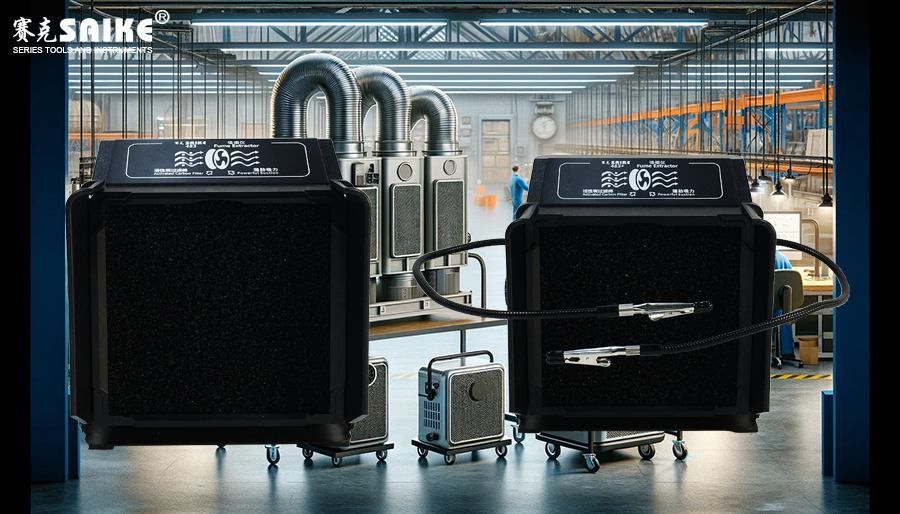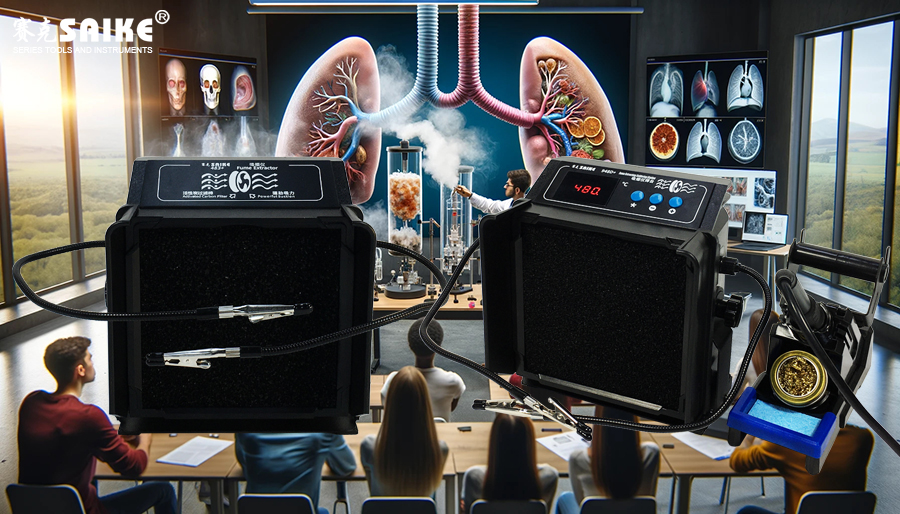
SK-YJ000XYY-KP 100006
I. Portable Smoke Absorber
1.Advantages
– Easy to carry and move: Due to its small size and light weight, it is convenient to move between different workstations, suitable for temporary or on-site working environments.
– Easy installation: No complicated installation procedures are required, plug and play, fast and convenient.
– Relatively low cost: Compared with stationary smoke absorbers, the purchase and operating costs of portable smoke absorbers are lower.
2.Disadvantages
– Limited suction and filtering capacity: Due to its smaller fan and filtering system, it may not be suitable for heavy smoke or continuous heavy-duty operations.
– Potential noise: To maintain strong suction, the fan speed of small devices may be higher, which may generate louder noise.
II. Stationary Smoke Absorber
1.Advantages
– Strong suction and filtering capacity: Equipped with a larger fan and a more complex multi-stage filtering system, it can effectively handle large amounts of smoke and toxic gases.
– Continuous and stable operation: Designed for long-term continuous use, suitable for fixed working environments such as large factories and laboratories.
– High customizability: Depending on the specific needs of the working environment, air volume, filter type, and other functions can be customized.
2.Disadvantages
– High cost: Purchase and installation costs are usually higher than portable smoke absorbers, and maintenance costs are also relatively high.
– Poor mobility: Once installed, it is not easy to move and difficult to change the work location.
– Large space requirements: It takes up a lot of space and requires sufficient installation and operation space.
III. Desktop Smoke Absorber
1.Advantages
– Suitable for desktop work: Specially designed for desktop work such as electronic welding, small-scale laboratory experiments, etc. It is moderately sized and easy to place on a workbench.
– Moderate function: Compared with portable devices, it has better suction and filtering effects, while maintaining a certain degree of mobility and economy.
2.Disadvantages
– Limited suction and filtering capacity: Although its performance is stronger than that of portable smoke absorbers, its processing capacity has certain limitations compared to stationary smoke absorbers.
– Relatively simple function: The functions and configurations are usually not as rich and customizable as stationary smoke absorbers.
IV. Conclusion
When choosing a smoke absorber, it needs to be decided based on the specific usage scenarios and needs. For industrial applications requiring high efficiency and large smoke processing, stationary smoke absorbers are a more suitable choice; for small-scale or temporary work, portable or desktop smoke absorbers may be more convenient and economical. Each type of smoke absorber has its unique advantages and limitations, and understanding these characteristics helps users make the most appropriate choice.


